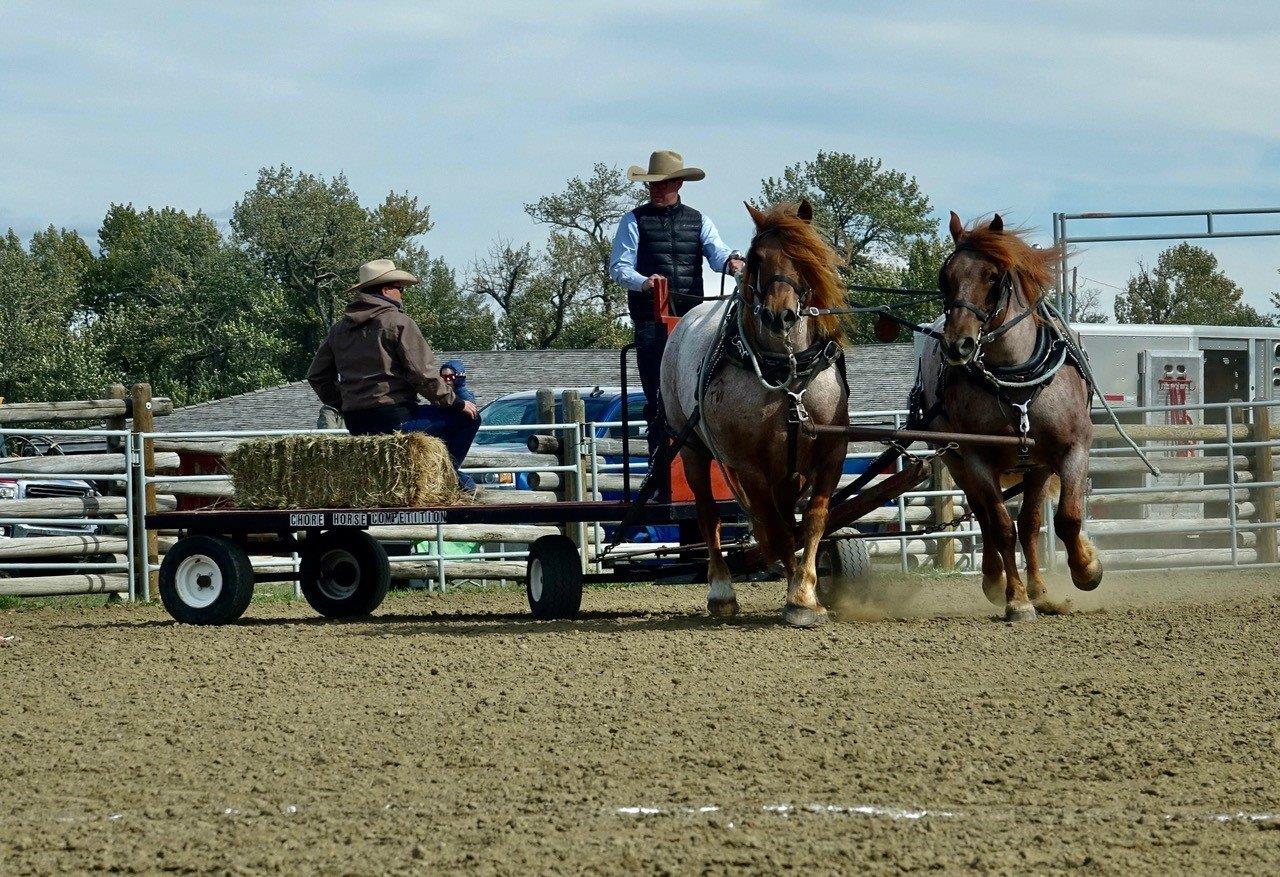At the annual Chore Horse Competition at Bar U Ranch National Historic Site in September, skilled teamsters (people who drive horses on long reins) harnessed up tons of horseflesh to recreate ranching work of bygone eras. I come from an era of forklifts and delivery trucks; my father, whose hundredth birthday would have happened this month if he’d lived, remembered how hard it was to do farm labour using animals instead of machines. “Farmers had to get up and groom and feed the horses before they had their own breakfasts, no matter the weather! Some of them shed tears of happiness when they could just go outside and start the tractor,” he would tell me.
But for one afternoon I could sink without effort into the historical connections between steed and horseman, a working relationship made more special because of how powerful and large these gentle giants are. Fortunately, I saw only teamwork and trust with humans and horses working in unison. The horses’ ears swivelled back to catch the soft “ho” and “step” commands uttered by the driver, the inside horse on a tight corner regularly shortening its stride to match the longer gait of the outside horse.
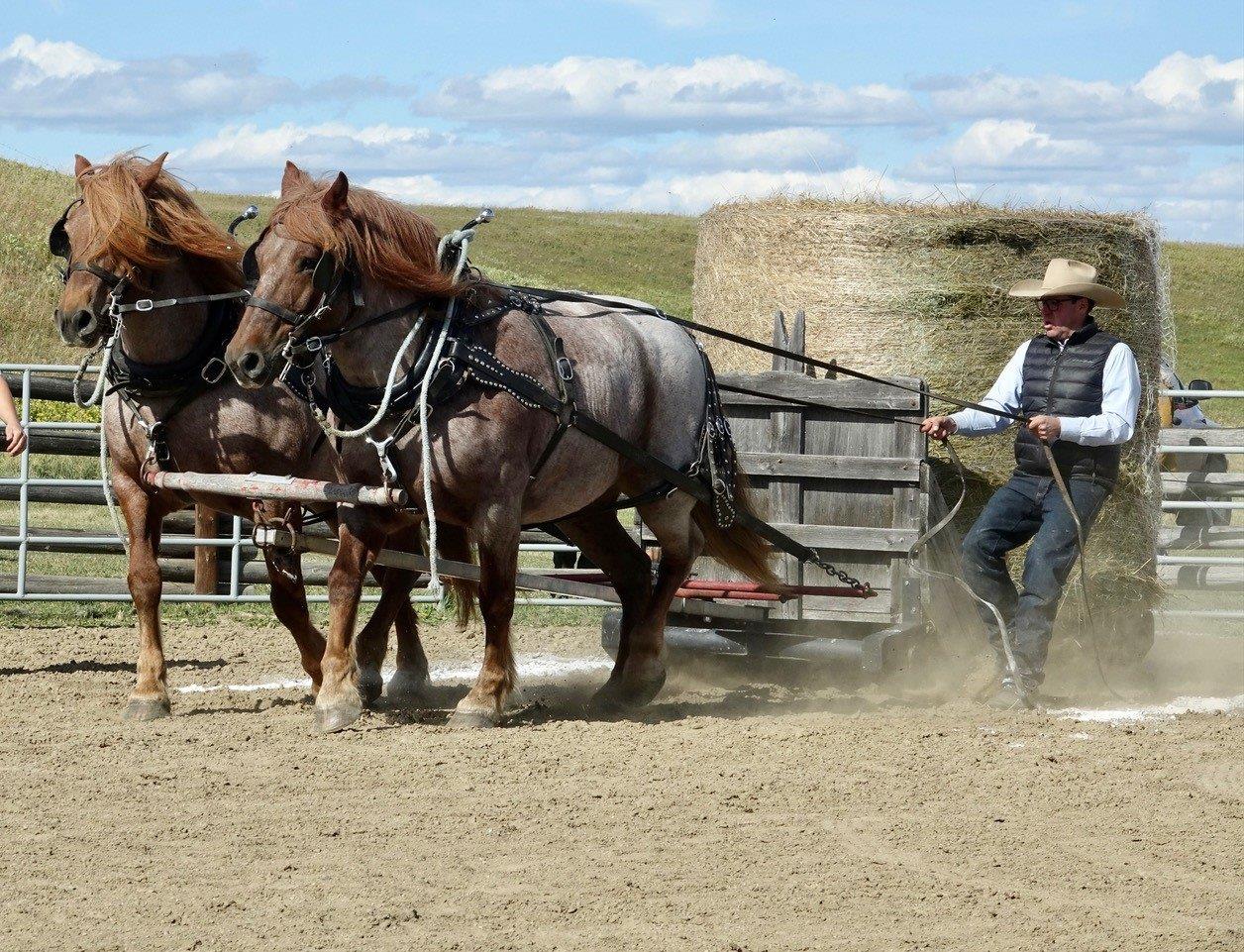
Teamster Geoff Hoar urges Maude and Molly to pull a heavy load – Photo Carol Patterson
Want to see more photos of Bar U Ranch and stunning Southern Alberta? Visit our Photo Gallery to see what didn’t make it into the story!
At the competition, events like the heavy pull, figure-eight turns, and a targeted drop of an ice block (in reality a bale of hay) mimicked tasks done by equines before machines took over. Points were awarded for speed and deducted for running into one of the obstacles or doing an unsafe wagon hitch.
As two horses strode onto the field, glossy black coats rippling over 1800-pounds of muscle apiece, the announcer revealed this was their first competition. The driver, Wayne Stordahl, a tall man compared to several cowboys leaning against the arena railings, looked diminutive next to the black steeds. Sitting in the front row, I sensed nervousness in the inexperienced team – stumbling over the wagon axis or jumping as they surged forward under a heavy load – but Stordahl never lost his composure. Deep creases on his face hinted at decades under the western sun as he touched his horses gently, his calm voice steadying the animals while he efficiently hitched and unhitched their harness.
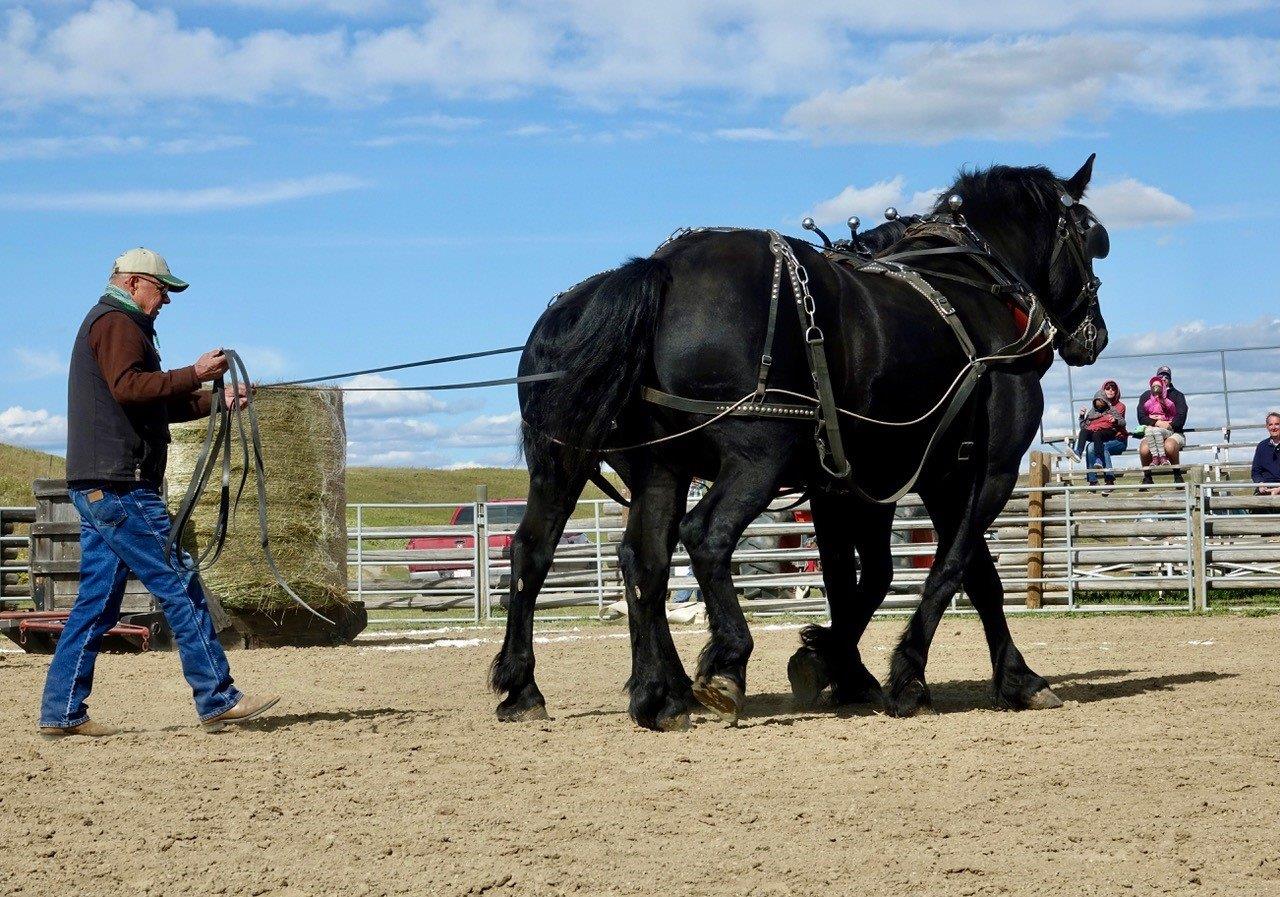
King and Axel enter their first competition under the steady hands of Wayne Stordahl – Photo Carol Patterson
A steady breeze blew over two hundred people clapping and cheering for the cowboys demonstrating old-fashioned horsemanship and competing for a silver buckle. At the beginning of the event, the announcer took a few moments to mention three men who had passed away recently, one of them a competitor at last year’s heavy horse pull. His horses were back under his son’s tutelage, and his grandson drove a team of Suffolk Punch, rusty-coloured, stocky creatures that are one of the United Kingdom’s oldest horse breeds.
Competitor Nathan Stone moved into the arena, dropping his reins as he parked a matching pair of black Percheron inside the gate, their silver harnesses sparkling in the sunlight reminded me of the sleek heavy horses in a particular beer commercial. Weaving through the course with horses as relaxed as when they started, he finished in one of the quickest times before a young boy ran onto the field. The next generation of teamsters, this grade-school horseman took the reins of the massive team from his father to drive them off the field. I noticed dad stayed close in case junior needed more muscle, but it seemed this connection to Alberta’s ranching history was being passed to another generation.
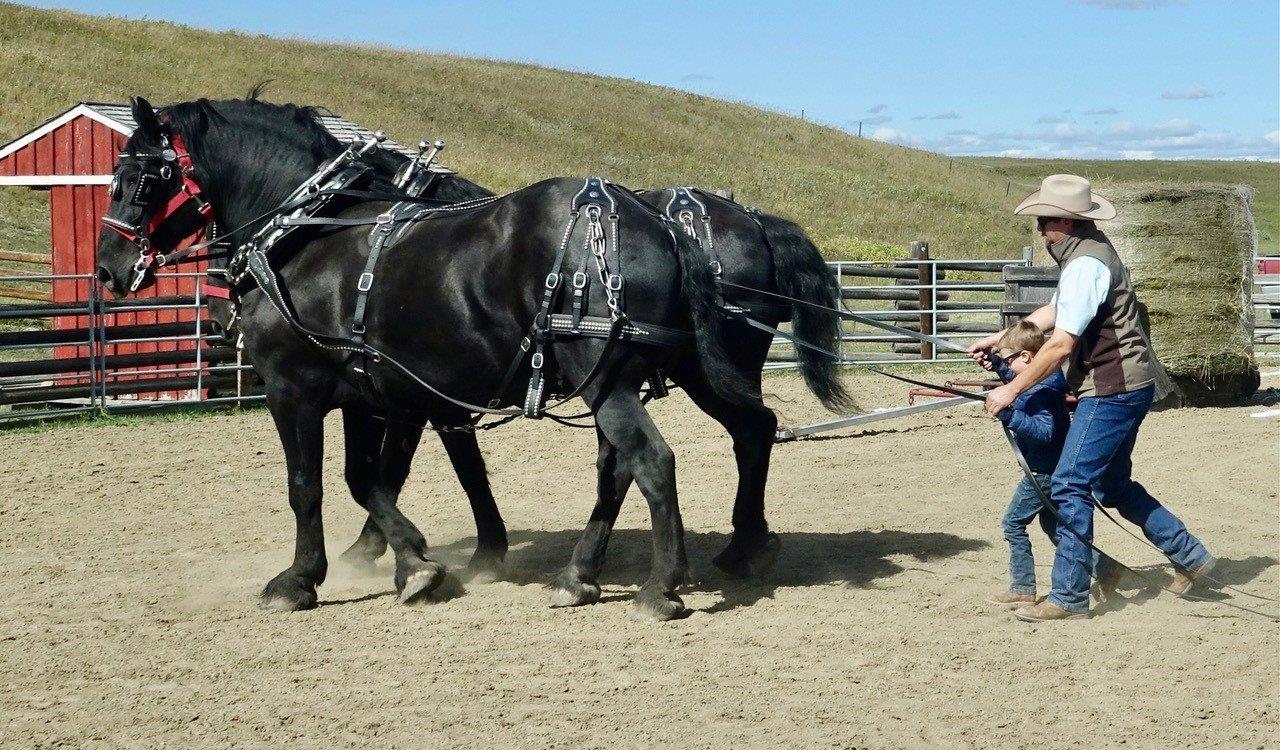
Nathon Stone teaches his son to drive the team – Photo Carol Patterson
Bar U Ranch National Historic Site has several demonstration events each summer such as heavy horses, extreme cowboy racing, and traditional rodeo. I felt like I was at a small-town affair, revelling in the intimacy of ringside seating and the chance to eavesdrop on competitors. I was eager to return for more ringside entertainment and Site Superintendent Dylan Spencer confirmed, “We’ll have the same events again next year. And we have lots of other great activities for families, wagon rides, hiking trails and roping (a replica steer).”
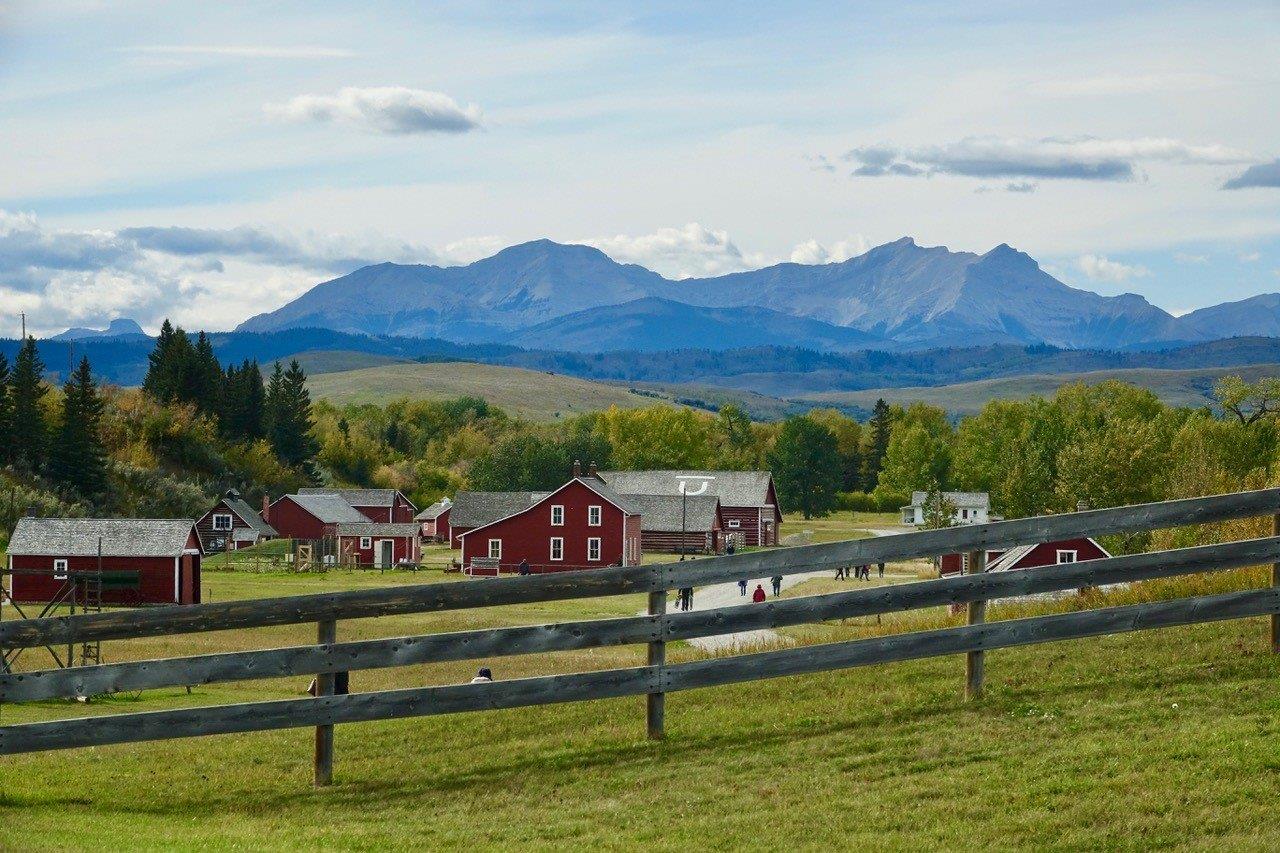
Bar U Ranch National Historic Site is Parks Canada’s only site dedicated to ranching history – Photo Carol Patterson
As the contest wound down, I watched pairs of muscled competitors walk back to their trailers, the horses’ muzzles pushed against mesh hay bags as they enjoyed a food reward, the owners ready to go back to their day jobs. These horses seemed well-loved and wanted to perform well for their drivers. The hours they spent training together had delivered an entertaining afternoon for spectators and Parks Canada’s only attraction devoted to ranching history had put a modern twist on cowboy traditions.
Bar U Ranch National Historic Site season runs from May to the end of September each year. If you have a Parks Canada Discovery Pass, it covers admission to more than 80 national parks and historic sites for 12 months, including admission to Bar U Ranch National Historic Site.
Want to see more photos of Bar U Ranch and stunning Southern Alberta? Visit our Photo Gallery to see what didn’t make it into the story!

